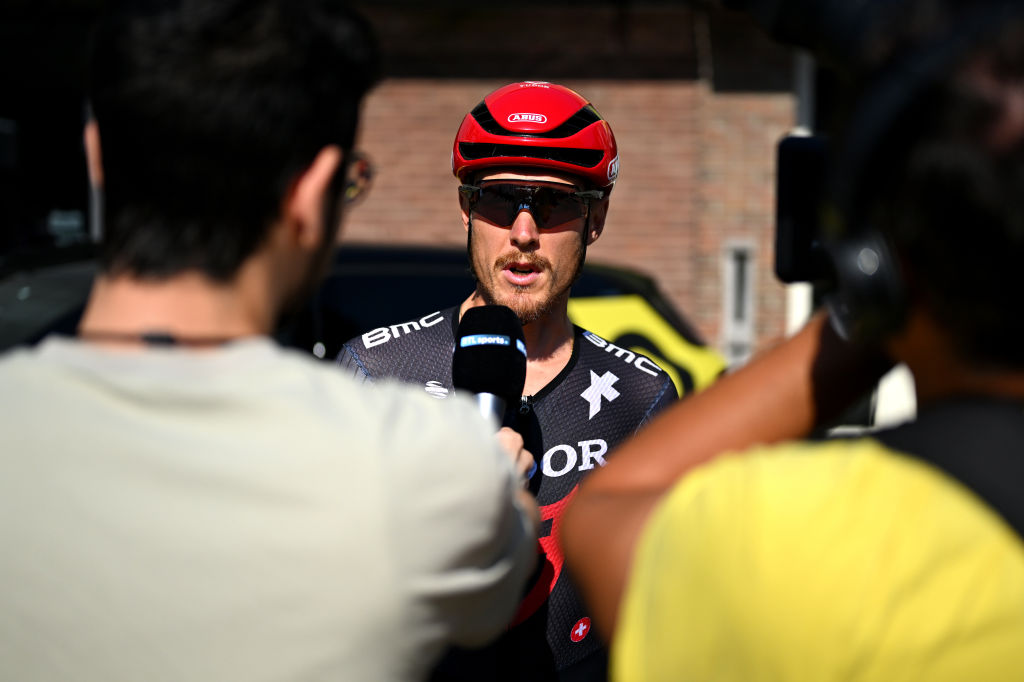
As riders reveal their 2025 goals and talk about their hopes and ambitions, safety is again a hot topic and sparking debate. Nobody wants to suffer serious injury nor see a repeat of the major crashes that involved Wout Van Aert at Dwars door Vlaanderen or Remco Evenepoel, Jonas Vingegaard and others at Itzulia Basque Country in 2024.
Last week Van Aert suggested that gear restrictions could be a way to reduce speeds in the peloton by making it more difficult for riders to move up on fast descents. Some of the most renowned equipment specialists in the sport have shunned that idea but Chris Froome suggested limiting the progression of technology to help improve safety.
Matteo Trentin (Tudor Pro Cycling) is one of the most respected voices in the peloton and always has a balanced, informed opinion, especially regarding rider and race safety. He wants a different, safer mindset.
"Gear restrictions can be part of the solution, together with bigger changes," Trentin told Cyclingnews during the Tudor Pro Cycling media day in Spain.
"We can't take crashing for granted. We have to have that mindset and change for the better, as other sports have done.
"We need to understand that cycling has changed. The speeds are higher but that's not actually the main problem. The general level of intensity and competitiveness has increased too. Where we once had 15 riders going into a corner, now we have 50 riders going for it. In other key moments of big races, riders aren't dropped or lined out like they once were. That only creates more problems and needs more attention."
Trentin called for race organisers to help make races safer by working with local authorities on route selection, to avoid the dangers of traffic 'furniture' and poor road design.
Trentin was in favour of circuit finishes, so that riders could see the final kilometres at least once before a high-speed sprint finish. He suggested it would mean fans could also see the race several times and so the organisation could generate more revenue and provide more services to fans.
He praised Paris-Roubaix organiser ASO for reducing the dangers of the Forest of Arenberg by adding a chicane at the entrance, suggesting it as a good example of change and improved safety.
"If we've always used the same approach to a key part of a race, maybe that's not good enough anymore and we have to change things to ensure safety," Trentin suggested.
"The way they changed the entrance to Forest of Arenberg in Paris-Roubaix after listening to the riders was an example of that. There have been so many crashes there but now, thanks to the chicane, that danger has been reduced."
Trentin called for more dialogue between the riders, the Cyclistes Professionnels Associés (CPA) riders' association, race organisers and the UCI.
"I can remember when we were always on one side and the organisers were on the other side," Trentin said of previous disputes.
"The new SafeR project has brought us together. The UCI can no longer put their head in the sand every time something happens. They've realised they need to act like any good governing body, find solutions to problems and bring everyone together.
"Athletes always want to perform. We work our asses off 365 days a year to perform. If I don't want to race, it's not because I'm soft or that I'm looking for a confrontation, it's because it's not safe and so not possible.
"When athletes in any sport tell you something is not safe, then everyone has to listen to them."







